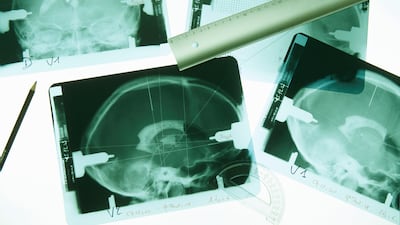Dostoyevsky considered it a route for transcendence, Emily Dickinson obliquely made references in her poetry to 'It', Edward Lear called it 'the Demon' and it made Graham Greene contemplate suicide. The baffling medical phenomena we now know as epilepsy is derived from a Greek word, meaning "to seize upon" or "to attack". Not only has this led to the condition being stigmatised and linked to religious mysticism, it has intrigued physicians and historians since ages.
Colin Grant's first brush with epilepsy was at one of his hospital rounds, where he came across an epileptic patient and witnessed first-hand the humiliation and violation they experience during an abrupt seizure. He candidly describes his bewilderment and curiosity in watching a person seized by spasms. He notes how "as well as repulsion, there was a prurient fascination in witnessing the otherworldliness of someone in the grip of a grand mal seizure." However, Grant's unfamiliarity with epilepsy abated soon enough as epilepsy was to become a regular fixture in his life.
Christopher, his younger brother, started having grand mal seizures which were initially dismissed by Grant as an isolated episode. He admits that this was really his reluctance to accept what he knew would be to "surrender to a new set of unexpected limits on your life".
His family had other reasons for denying the diagnosis. Their devout mother thought the seizures were the devil's work rather than a neurological ailment, and while her views may seem anachronistic she was not alone in her beliefs. Historically, epileptics have been treated abominably – exorcised, forcibly sterilised, burned at stake on suspicion of communicating with the devil, incarcerated in asylums and subjected to other horrid treatments.
The history of epilepsy vacillates between it being perceived as a neurological disorder and the manifestation of the Divine. Grant utilises his rational scientific approach to investigate the condition medically but also, time and again, returns to the enigma of it. Since this is one of those disorders about which science is still inconclusive, veering between the two extremes makes sense.
___________
Read more:
Book review: Ma’n Abu Taleb’s All the Battles is a hard hitting metaphor for life
Book review: Imperial Muslims: the fluidity of existence of mortal men
Book review: John Lyons lays bare the tyrannies of Israel’s apartheid state in memoir
___________
Grant traces the treatment of epilepsy, which in the past included the absurd practices of bloodletting and prescribing high dosages of bromide. Even now, most medication prescribed only succeeds in "managing" seizures, not in curing epilepsy. The title of the book refers to the olfactory hallucination associated with temporal lobe epilepsy, which in simple terms is called an aura. Many epileptic patients report a peculiar sense of burning rubber moments before they have a seizure.
That distinct smell foreshadows the fit and gives many people just enough warning time to prepare themselves for it. Despite all the scientific advances in the past century, our understanding of auras, which vary with individual epileptics, has not progressed much.
Because of an exaggerated symptom expression and unpredictable onset, epilepsy is often confused with mental illness and linked with various epithets like "lunatic", "witchcraft", "demonic possession" and "degenerates". To this day, in many countries, epilepsy is considered to be grounds for a decree of nullity of a marriage.
Grant takes us through western history but to those unfamiliar with the subject, the narrative might seem riddled with medical jargon. This is deftly balanced by the writer's personal story about the progression of his brother's epilepsy and how his family coped with it.
These interludes add a sense of pathos to his scientific inquiry. Grant talks about his special younger brother with heartrending fondness. "He was the youngest, the most exuberant and happy", a boy who could disarm even their "tyrannical father Bageye", subject of the writer's previous memoir of his British Jamaican family.
Grant humanly depicts Christopher's struggles with compassionate candour. He stubbornly fought his illness, before succumbing to sudden death syndrome, and refused to accept how the diagnosis required irrevocable lifestyle changes. Christopher faced a Catch-22 situation in job interviews about whether to inform employers about his illness or wait for them to find out for themselves.
He refused to wear a "Epilepsy" metal bangle and avoided owning up to his condition after waking up in a hospital after an abrupt seizure. The writer's proximity to an epileptic makes him draw similarities of his peculiar behaviour with that of other famous people with the illness. Christopher experienced moments of ecstasy during his seizures, something also reported by Dostoyevsky and Neil Young, the latter avoiding medication to attain this elevated level of consciousness.
Grant meticulously combines the historical trajectory of epilepsy with accounts of famous epileptics like Young, Dickinson and George Gershwin. A Smell of Burning is a compelling eulogy and a concise history of a perplexing illness.

